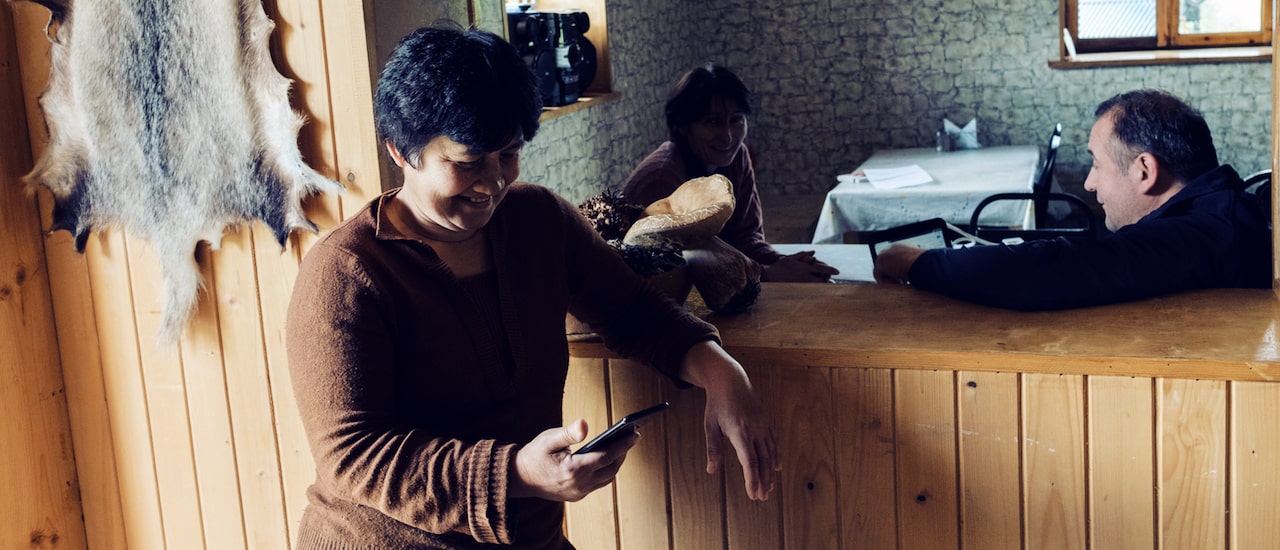Connecting the most remote and challenging territories of any country to the Internet can be tough. Typically, Internet access spreads gradually from urban conglomerations towards smaller hubs, and finally, to the most remote and sparsely populated areas. This is just common business sense.
Many of these remote areas are unique in terms of their people, culture, and livelihood, and Internet access can make a world of difference. This was the case when the Internet Society, together with its local partners, launched the first community network in Georgia, in the mountainous region of Tusheti, in September 2017.
Creating Impact
One year on, the Internet has made a significant difference to the lives of the Tushetians. This week, the Internet Society published an impact assessment on the Tusheti community network highlighting the transformation in tourism, e-commerce, and people’s livelihoods.
The Internet has had a positive impact on tourism through more effective online advertising and sales, and through efficiencies in businesses operations. With these encouraging developments, local residents are investing in the construction and opening of new guesthouses. The Internet has also increased the levels of safety and mobility in this remote part of the world by providing a communications channel to the doctor and shepherds as well as by enabling remote work and additional income streams.
Sustaining the Network
Sustainability, both economic and technical, is a key consideration when building community networks. In Tusheti, the network is based on a non-profit model, which makes possible affordable connectivity and sufficient margins for equipment renewals and operational support.
Tusheti Development Fund (TDF), the network owner and operator, initially offered subsidized rates to increase Internet uptake and has since adjusted the price of connectivity, providing different options in relation to Internet speed. Monthly Internet traffic has risen from 3Mbps initially to 15Mbps at the end of the 2018 summer season. Due to harsh winters, some of the equipment has been replaced and TDF has employed a local operations coordinator to provide technical support. While further adjustments to the model are possible, the Tusheti network is finding its feet in terms of sustainability.
“Hauling the Internet to an Ex-Soviet Outpost High in the Caucasus Mountains”
In January, The New York Times profiled the Tusheti Community Network. The work was extra challenging thanks to the difficult terrain and unwieldy nature of loads that had to be brought up by packhorses.
Scaling Community Networks
Following the success of the Tusheti project, the Internet Society signed a Memorandum of Understanding (MoU) with the Georgian government in the autumn of 2018 to support another community network initiative in Georgia, in the Pshavi-Khevsureti and Gudamakari regions. This network will cover 67 villages, 3 high schools, and nearly 500 families, which makes it many times larger than the Tusheti project. The operational model will remain the same – the network will be owned and operated by a non-profit entity “Mountain Community Network.”
In one year, we have moved from what was essentially a pilot project in Tusheti to a replicable and scalable approach to connect communities in remote areas. The Mountain Community Network will benefit from a wide partnership – government, business, and civil society – providing support in the shape of funding, equipment, technical expertise, and project management. The Georgian community has endorsed community networks as an innovative approach to provide Internet access in the most remote areas.
The Mountain Community Network is expected to become operational in the summer of 2019.
Read the Tusheti Case Study and learn how community networks can help close the digital divide.
